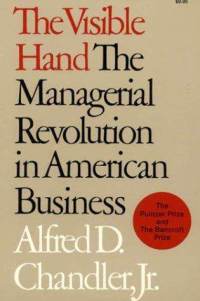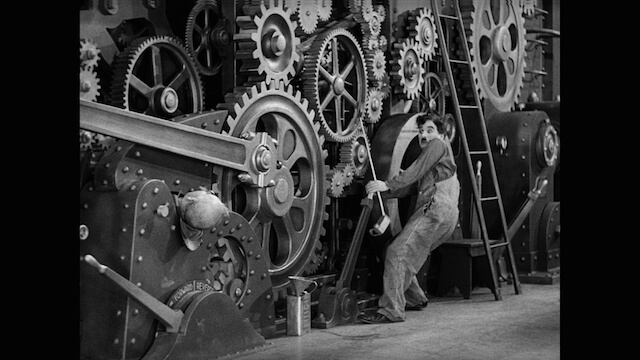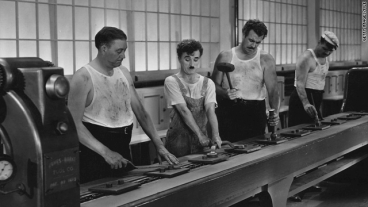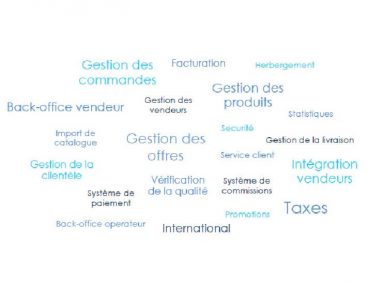The Rise and Fall of HR as a Department
20 September 2016 - Author : Laetitia VitaudWill new technology, organisations and culture really bring down the HR department?

In 1977 business historian Alfred D. Chandler published The Visible Hand: The Managerial Revolution in American Business in which he argued that in the nineteenth century, Adam Smith’s famous “invisible hand” of the market was replaced by the “visible hand” of middle management. The managers of America’s gigantic corporations—General Electric among them —became a powerful institution and engine of the US economy.
As modern multi-unit business supplanted traditional family enterprise, administrative coordination and managerial hierarchy became a source of power and continued growth. These salaried managers became increasingly professional and thus, management was separated from ownership. That is how HR emerged as one of the most critical corporate functions. A part of middle management, HR managers were responsible for all the others. They would have to make human resources management into a well-oiled and reliable machine for the “visible hand” to work its magic.

Today, HR is increasingly criticised and challenged. It is said to have become irrelevant. As new forms of management are being created and companies are being “liberated”, many rungs in the hierarchy are to be destroyed. HR is to be transformed or even to disappear as a separate business unit.
To understand HR’s evolution and the challenges it is facing today, it is interesting to have a closer look at its birth and its rise. For what made HR so successful yesterday could be exactly what puts it under so much fire today. But in its past glory also lie the secrets to its continued future…
How HR came to be
Two men are generally credited with “creating” the idea of HR in the 18th century. The first, Robert Owen, is a Scottish social reformer who thought workers ought to be “motivated” rather than threatened. The second, Charles Babbage, was a mechanical engineer who brought the scientific approach to management (long before Frederick Taylor). Although there was no talk of “HR” during the industrial revolution, these two men can indeed be said to have contributed to the birth of HR as a discipline roughly a century later. They both understood that people were responsible for the success of an organisation and that their wellbeing led to better work.

It’s only a century later that HR actually became a specific field, when Frederick Taylor, a mechanical engineer (like Babbage), explored “scientific management”, trying to increase the economic efficiency of manufacturing workers. He identified labour as the main input in the manufacturing process and dedicated his life to improving its productivity. Thus Taylor was probably the first “management consultant” in history, and the father of HR.
He believed all control ought to be transferred from workers to management, and set out to increase the separation between planning work (brain) and executing work (hands). Managers were to give plans and job specifications to the workers. For the organisation to avoid arbitrariness, the relationships between managers and employees were to be quite impersonal. The idea was to prevent favouritism, nepotism and prejudice to promote rationality and efficiency.

As gigantic corporations and sprawling public administrations changed the business and public policy landscapes in the late 19th- early 20th centuries, the employer-employee relationship was deeply transformed. It is then that “industrial and labour relations” (the original name given to “HR”) became formalised as a discipline. Then the work of several psychologists, sociologists and philosophers—such as Max Weber, Abraham Maslow or Kurt Lewin—completed the stock of human sciences knowledge that would make HR into an academic and scientific discipline to be taught at university (which happened in the late 1940s).
Throughout the following decades, modern HR would become increasingly professional and structured around five core functions—staffing, human resource development, compensation and benefits, safety and health, and employee and labour relations—and an increasingly long list of tasks. Within HR, more and more executives would become highly specialised and deal with one set of issues only. The organisation of HR as a department would mirror corporate organisation as a whole.
What could cause its downfall
It’s become a little too commonplace to predict the downfall of HR. Some claim its future will be radically different and others that it may altogether cease to exist as a separate corporate function. Many agree modern HR is being “disrupted” by digital, but digital isn’t everything. Three types of transformations are generally listed:
Technological: HR may continue to exist as a department, but it will incorporate more tech. HR can be made more efficient. Artificial intelligence can already do a lot of HR tasks better. Will algorithms replace all HR executives? Software platforms have automated many tasks. The use of big data has led some companies to optimise what required intuition only, which is illustrated at length in the book Work Rules! Insights from inside Google That Will Transform How You Live And Lead, by Laszlo Bock, Senior Vice President of “People Operations” (HR) at Google, who writes “Don’t trust your gut: use data to predict and shape the future!”

Many HR practices have already been transformed. The process of recruiting can never go back to what it was. Recruiters used to rely essentially on printing in publications and word of mouth to fill open positions. Now they have access to millions of possible recruits and rely increasingly on e-recruiting tools to handle the workload. HR professionals have to have a social media presence to build an employer brand. They can post jobs and track applicants for all the different positions on a single platform. Interview reviews, background and onboarding data is centralised. Many software solutions have been developed for recruiters. Salesforce, for example, has become a key player on that market.
HR has to process a vast amount of paperwork and data on a daily basis. Human Resources Information Systems (HRIS) have made it possible for HR to streamline the process. Data can be analysed quickly across many locations. Examples of such Human Resources Information Systems include PeopleSoft, MyTime, SAP, Timeco, and JobsNavigator.
Last but not least, training has also been made more efficient and cheaper. Training in virtual classrooms makes it possible for the HR professionals to train a large number of employees quickly and to assess their progress through computerized testing programs. Employees can take control of their own learning and development by engaging in training at a time and place of their choosing, helping them manage their work-life balance.
At best, technology automates many of the tasks that used to be performed by HR professionals. At worst, these professionals could be made redundant for those tasks. Like a lot of professions, HR can never be the same again. You can ignore tech.
Organisational: as traditional hierarchical organisations are being challenged, so is traditional HR as a separate department. Netflix and other Silicon Valley giants have been showing the way towards new forms of organisations and HR. These companies believe culture trumps everything else when it comes to running human resources. They claim HR functions should not be separated from the rest of the company’s operations, because, they say, only the teams themselves can know exactly who can be a “cultural fit”. So HR is to be organically integrated into the rest of the company. Recruiting, training and everything else is to be a side job for everyone who isn’t HR.
Silicon Valley companies are also leading the charge when it comes to flattening organisational charts. In flat organisations, employees are more autonomous and responsible. There is supposedly no separation between the “brain” and the “hands” anymore. The whole notion of a separate HR department that decides how HR is to be run then becomes irrelevant. Likewise, in “liberated” companies—a concept made popular by Isaac Getz’s Freedom Inc— the whole notion of HR becomes obsolete.
Last but not least, organisations are transformed by the ever bigger role played by workers who are outside the organisation. Some tasks are crowdsourced, others are outsourced. More freelancers do work that used to be controlled internally. If work is increasingly performed outside the organisation, how does it affect HR?
Organisational transformations present an unprecedented challenge to HR professionals. But these changes do not necessarily make them redundant. If anything, their role is more important than ever! That role will be transformed—because you can’t “manage” outsiders like you can manage your own people—and will focus increasingly on culture to cement all the different players together…
Cultural: workers have new aspirations that lead them to work as independent workers or to seek increased flexibility in their jobs. The increasingly high number of freelancers in turn affects the aspirations and the culture of “regular” workers as well. HR professionals are therefore obsessed with the idea of “understanding millennials”.
More importantly the role of culture in companies is becoming ever more critical. It is both the cement and the engine of an organisation. For HR professionals, culture can either be an empty buzzword or the opportunity to reinvent their work.
Hiring cultural fits has never been more critical! Netflix’s Patty McCord said it all a few years ago:
“Hire, Reward, and Tolerate Only Fully Formed Adults.
If you’re careful to hire people who will put the company’s interests first, who understand and support the desire for a high-performance workplace, 97% of your employees will do the right thing. Most companies spend endless time and money writing and enforcing HR policies to deal with problems the other 3% might cause. Instead, we tried really hard to not hire those people, and we let them go if it turned out we’d made a hiring mistake.
Adultlike behavior means talking openly about issues with your boss, your colleagues, and your subordinates. It means recognizing that even in companies with reams of HR policies, those policies are frequently skirted as managers and their reports work out what makes sense on a case-by-case basis.” (“How Netflix reinvented HR”)

If, as Peter Drucker once said, “culture trumps strategy anytime”, then HR could be showing the way forward for everyone else!
When one looks at the early history of HR, one can see it was successful because it fit the strategy of the corporations of the time and shaped their culture and organisational model. These corporations are changing at a fast pace. More work is now automated or performed outside traditional organisations.
HR is not doomed to disappear. It will have to find a new role in tomorrow’s organisations. Its number one mission will be to their culture.


